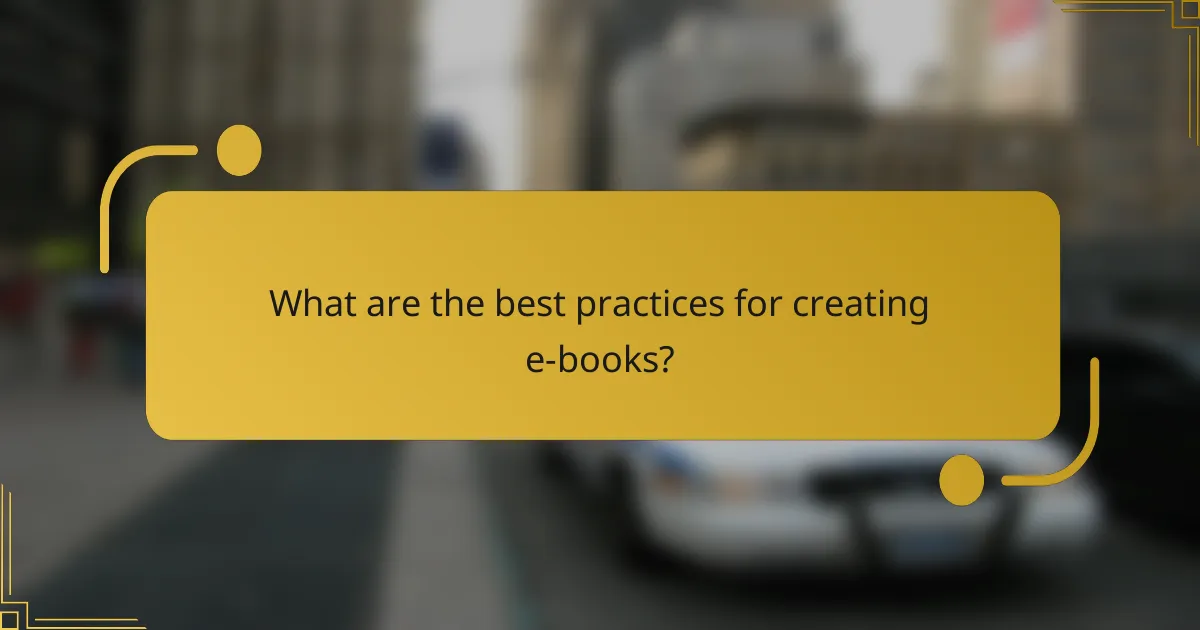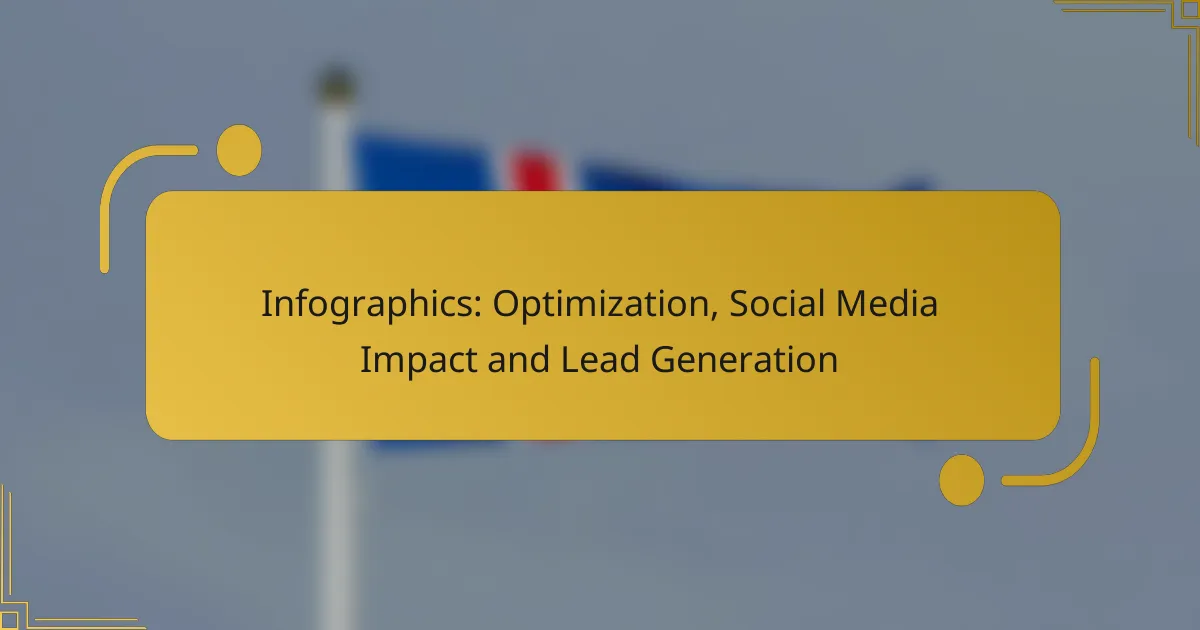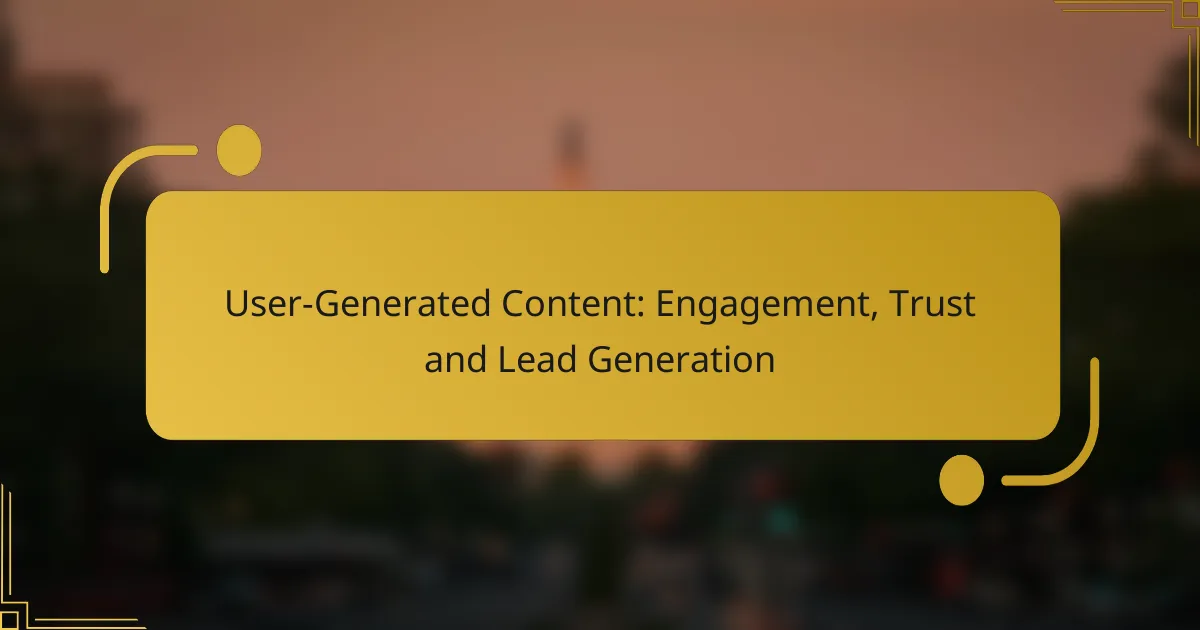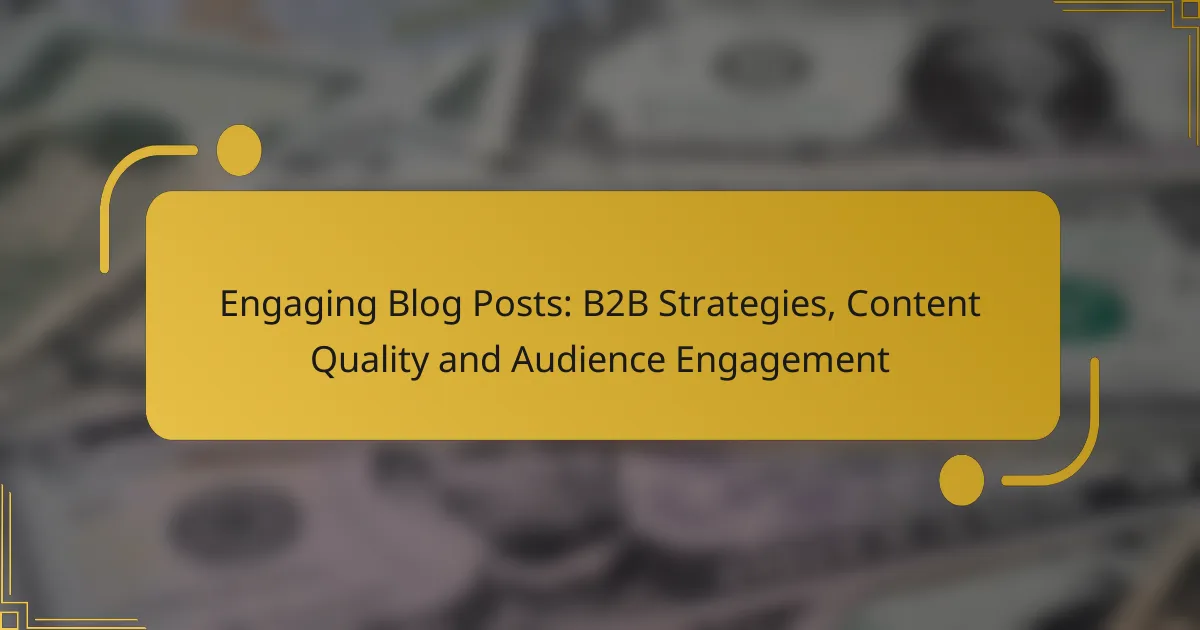E-books serve as powerful lead magnets by delivering valuable content that draws in potential customers and encourages them to provide their contact information. To maximize their effectiveness, it’s crucial to understand your audience and present insights in an engaging format, focusing on clarity and actionable takeaways. By implementing strategic promotion through digital marketing channels, businesses can significantly boost their lead generation efforts.

How can e-books be effective lead magnets?
E-books can be highly effective lead magnets by offering valuable content that attracts potential customers and encourages them to share their contact information. When designed well, they provide insights or solutions that resonate with a target audience, driving engagement and conversions.
High perceived value
To maximize their effectiveness, e-books should deliver high perceived value. This can be achieved by addressing specific pain points or interests of your audience, ensuring the content is both informative and actionable. For instance, an e-book on digital marketing strategies for small businesses can attract entrepreneurs looking for practical guidance.
Consider using professional design and formatting to enhance the e-book’s appeal. A well-designed cover and clear layout can significantly boost perceived value, making it more likely that users will exchange their information for access.
Targeted audience engagement
Engaging a targeted audience is crucial for e-book success. Tailor your content to meet the needs and preferences of a specific demographic or industry. Use surveys or social media insights to identify topics that resonate with your audience, ensuring the e-book addresses their unique challenges.
Promote the e-book through channels where your target audience is active, such as industry forums, social media groups, or email newsletters. This focused approach increases the likelihood of attracting leads who are genuinely interested in your offerings.
Content marketing synergy
E-books should complement your overall content marketing strategy. Use them as part of a broader campaign that includes blog posts, webinars, and social media content. This synergy reinforces your brand message and encourages multiple touchpoints with potential leads.
For example, if you publish a blog post summarizing key insights from your e-book, you can link to the full version as a call-to-action. This not only drives traffic to your e-book but also positions your brand as a thought leader in your industry.

What are the best practices for creating e-books?
Creating effective e-books involves understanding your audience and delivering valuable content in an engaging format. Best practices focus on clarity, design, and actionable insights to maximize conversion rates.
Clear and compelling title
A clear and compelling title is crucial as it grabs attention and conveys the e-book’s value. Use specific keywords that resonate with your target audience to enhance searchability and relevance.
Consider using numbers or questions in your title, such as “10 Strategies for Effective Marketing” or “How to Boost Your Sales in 30 Days.” This approach can increase curiosity and click-through rates.
Visually appealing design
The design of your e-book should be visually appealing to keep readers engaged. Use a clean layout with ample white space, consistent fonts, and high-quality images to enhance readability.
Incorporate elements like infographics, charts, and bullet points to break up text and highlight key information. Tools like Canva or Adobe InDesign can help create professional-looking designs without needing extensive graphic design skills.
Actionable content
Actionable content is essential for providing real value to your readers. Ensure that your e-book includes practical tips, step-by-step guides, or checklists that readers can implement immediately.
For instance, instead of just discussing theory, include case studies or examples that illustrate how to apply the concepts. This not only enhances credibility but also encourages readers to take action, increasing the likelihood of conversions.

How to promote e-books for lead generation?
Promoting e-books effectively for lead generation involves leveraging various digital marketing strategies to attract potential customers. By utilizing social media, email marketing, and optimizing landing pages, businesses can significantly enhance their lead capture efforts.
Utilizing social media platforms
Social media platforms are powerful tools for promoting e-books and generating leads. Create engaging posts that highlight the value of your e-book, using eye-catching visuals and compelling calls to action. Consider using paid ads on platforms like Facebook or Instagram to reach a broader audience.
Engagement is key; encourage shares and comments to boost visibility. Joining relevant groups or communities can also help you connect with potential readers who are interested in your e-book’s topic.
Email marketing campaigns
Email marketing remains one of the most effective ways to promote e-books for lead generation. Build a targeted email list and send out newsletters that include a link to download your e-book. Personalize your emails to increase engagement and conversion rates.
Consider offering exclusive content or bonuses for subscribers who download the e-book, which can incentivize sign-ups. Regular follow-ups can keep your audience engaged and encourage them to share the e-book with others.
Landing page optimization
Optimizing your landing page is crucial for converting visitors into leads. Ensure that your landing page clearly communicates the benefits of your e-book and includes a simple form for users to fill out in exchange for the download. Use strong headlines and persuasive copy to capture attention.
Incorporate testimonials or reviews to build trust and credibility. A/B testing different elements, such as call-to-action buttons and images, can help identify what resonates best with your audience, ultimately improving conversion rates.

What metrics to track for e-book performance?
To effectively assess e-book performance, focus on key metrics such as download rates, conversion rates, and engagement metrics. These indicators provide insights into how well your e-book attracts and retains your audience, ultimately influencing your lead generation efforts.
Download rates
Download rates indicate how many users have accessed your e-book after it was offered. A high download rate suggests that your e-book is appealing and effectively promoted. Aim for a download rate that reflects industry standards, typically ranging from 10% to 30% of visitors who engage with your offer.
To improve download rates, ensure your e-book title and description are compelling. Use clear calls-to-action and consider offering the e-book in exchange for an email address to capture leads. Monitor trends over time to identify which promotional strategies yield the best results.
Conversion rates
Conversion rates measure the percentage of visitors who complete a desired action, such as signing up for your newsletter or making a purchase after downloading your e-book. A strong conversion rate can range from 2% to 10%, depending on your industry and the quality of your offer.
To enhance conversion rates, optimize your landing pages and simplify the sign-up process. A/B testing different elements, such as headlines and images, can help identify the most effective combinations. Ensure that the e-book aligns with your audience’s interests to increase the likelihood of conversion.
Engagement metrics
Engagement metrics track how users interact with your e-book after downloading it. Key indicators include time spent reading, pages viewed, and the number of shares on social media. High engagement suggests that your content resonates with readers, which can lead to increased trust and future conversions.
To boost engagement, consider including interactive elements like quizzes or discussion prompts within your e-book. Encourage readers to share their thoughts on social media and provide easy sharing options. Regularly review engagement data to refine your content strategy and improve future e-books.

What are common pitfalls in e-book lead generation?
Common pitfalls in e-book lead generation can significantly hinder conversion rates. These mistakes often stem from a lack of understanding of the target audience, ineffective content strategies, and inadequate follow-up processes.
Overly promotional content
Creating e-books that are excessively promotional can turn potential leads away. Instead of providing valuable insights, overly sales-focused content may feel like a hard sell, which can damage trust and credibility.
To avoid this, focus on delivering informative and educational material that addresses the audience’s pain points. Aim for a balance where the e-book subtly promotes your brand without overshadowing the value it offers.
Poor targeting strategies
Poor targeting can result in e-books reaching the wrong audience, leading to low engagement and conversion rates. It’s essential to identify and understand the specific demographics and interests of your ideal customers.
Utilize tools like customer personas and market research to refine your targeting strategies. Tailoring your content to meet the needs of a specific audience can significantly enhance the effectiveness of your lead generation efforts.
Neglecting follow-up
Failing to follow up with leads after they download your e-book can result in lost opportunities. A timely and relevant follow-up can nurture leads and guide them further down the sales funnel.
Implement an automated email sequence that thanks users for downloading the e-book and offers additional resources or a consultation. This proactive approach can help maintain engagement and increase the likelihood of conversion.

How to choose the right topics for e-books?
Choosing the right topics for e-books involves understanding your audience’s needs, staying updated on industry trends, and analyzing competitors. This ensures that your content resonates with potential leads and effectively serves as a lead magnet.
Audience pain points
Identifying audience pain points is crucial for selecting e-book topics that truly engage readers. Conduct surveys, interviews, or analyze feedback to uncover common challenges faced by your target demographic. For example, if your audience struggles with time management, an e-book on productivity tips could be highly appealing.
Consider creating a list of the top five pain points your audience experiences. This can guide your topic selection and help ensure your e-book addresses real issues that potential leads are eager to solve.
Industry trends
Staying informed about industry trends can help you choose relevant e-book topics that attract attention. Follow industry news, subscribe to relevant publications, and engage with thought leaders on social media to identify emerging topics. For instance, if sustainability is trending in your sector, an e-book on eco-friendly practices could capture interest.
Regularly review reports or studies that highlight key trends in your industry. This can provide insights into what topics are gaining traction and help you position your e-book as a timely resource.
Competitor analysis
Analyzing your competitors can reveal gaps in their content offerings and highlight opportunities for your e-books. Review the topics they cover and assess their engagement levels. If competitors have not addressed a specific pain point, this could be your chance to fill that void with a targeted e-book.
Create a simple comparison chart of competitors’ e-book topics, noting their strengths and weaknesses. This can help you identify unique angles or underserved areas that your e-book can address, enhancing its appeal as a lead magnet.



